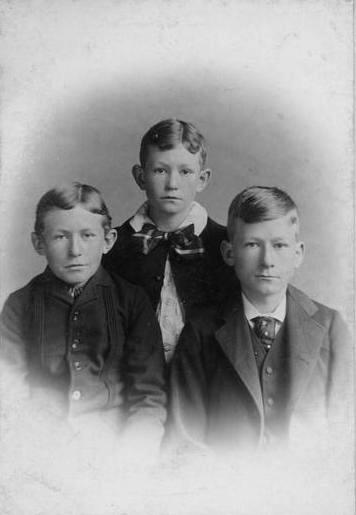
Figure 1.--These three brothers were dressed in three different types of suits. This was an example of age grading which was a common convention in the late-19th century. The cabinet portrait was taken by Hackers in Dayton, Ohio. |

|
The practice of age-grading childrens clothing is a realtively modern phenomenon. We do not see it in the 17th century. Boys after breeching wore the same styles as their fathers, only in smaller sizes. The popularity of the different devices and the age appropriateness has varied over time. Boys and men dressed alike through the 18th century. The style of suit began to be a factor in the late-18th century with the appearance of the skeleton suit. Age grading seems rather a 19th century convention, in part because, destinctive styles for children appeared only in the late-18th century and were largely a 19th century development. Interesingly, long pants were initially a style for boys. Men especially men in comfortable circumstances wore knee breeches. We see boys wearing both destimntive jackets and pants. As the 19th century progressed more and more destinctions appeared for children of different ages, especially the boys. Age grading was very pronounced bb the late-19th century. The photographic record shows that in was a convention widely practiced throughout America, although the approach varied from family to family. The type and size of collars came to vary widely. Neckwear was particularly common in the late-19th and early 20th century. Pants became increasing important in the late-19th century and early- to mid-20th century. In the 0h century, differemces in jackets began less and less pronounced while differences in pants continued for some time.
The The practice of age-grading childrens clothing is a realtively modern phenomenon. We do not see it in the 17th century. Boys after breeching wore the same styles as their fathers, only in smaller sizes.
Boys and men dressed alike through the 18th century. The style of suit began to be a factor in the late-18th century with the appearance of the skeleton suit. Age grading seems rather a 19th century convention, in part because, destinctive styles for children appeared only in the late-18th century and was largely a 19th century development.
We see boys wearing suits with both destimntive jackets and pants throughout the 19h century. Age grading was not exclusive to the 19th century, bht it was the decade whn uch conventions were the most pronounced. The skeleton suit was a boys' style and very common throughout the early-19th century. Interesingly, long pants were initially a style for boys. Men especially men in comfortable cicumstances wore knee breeches. Only slowly did fashionable men begin wating long pants.
As the 19th century progressed more and more destinctions appeared for children of different ages, especially the boys. Frock cots with long jackets became popular with men. Boys tended to wear suits with shorter cut jackets. We also see a lot of boys not wearing suits, but jacket-like tunics. This began to change with wealth created by the Indurial Revolition began to change family live styles. We see boys wearing collar-buttoning jackets, cut-away jackets ad sack suit jackets with lapels at mid century. We also see boys wearing shortened-length pants, although knee-length pants were rare. Decorative items gradually became very important in ae grading. Age grading was very pronounced bb the late-19th century. The photographic record shows that in was a convention widely practiced throughout America, although the approach varied from family to family. The type and size of collars came to vary widely. Neckwear was particularly common in the late-19th and early 20th century. Pants became increasing important in the late-19th century as an age grading factor.
Age grading in suits cntnued after the turn-of the 20h cetury. We see many of the same trends durin the first two decades, Jackets began to be less imporant, but pants continued to be vey imporant. Major changes occurred after World War (1914-18). Gradually we see men and boys wearing similar jackets. The juvenile Eton suit was an exception. Boys did tend to wear different pants, primarily knicjes until the approasch of mid-century. At thi point afe grading in suits becme less and lsss imporant, but we see suits in general becoming less important.
Navigate the Boys' Historical Clothing Web Site:
[Return to the Main U.S. suits age conventions page]
[Return to the Main U.S. suits age page]
[Return to the Main U.S. suits page]
[Return to the Main suit chronology page]
[Return to the Main Norfolk suit country page]
[Introduction]
[Activities]
[Biographies]
[Chronology]
[Clothing styles]
[Countries]
[Bibliographies]
[Contributions]
[FAQs]
[Glossaries]
[Images]
[Registration]
[Tools]
[Boys' Clothing Home]
